Salivary gland tumors are variable in location, origin, and malignant potential.
Pathology
In general, the ratio of benign to malignant tumors is proportional to the gland size; i.e. the parotid gland tends to have benign neoplasms, the submandibular gland 50:50, and the sublingual glands and accessory glands mostly malignant. Due to the size discrepancy, in absolute numbers, the parotid gland has the most tumors.
Location
parotid gland: 70%
minor salivary glands (including sublingual): 22% with the palate being most frequent (see: minor salivary gland tumors)
Overall ~80% of all parotid masses are benign and the majority of these are pleomorphic adenomas.
Subtypes
Benign
-
epithelial
pleomorphic adenoma: this is the most common (≈50%) tumor of the parotid
Warthin tumor: essentially only found in the parotid, in older, usually male patients; it is bilateral in 10-15%
myoepithelioma: considered a subtype of pleomorphic adenoma; they can also originate in breast and bronchus
-
non-epithelial
Malignant
mucoepidermoid carcinoma: most of the malignant lesions
lymphoepithelial carcinoma
-
malignant mixed tumors of the salivary glands
carcinosarcoma (true mixed tumor of the salivary glands)
-
metastases (mostly to intraparotid lymph nodes) 5
cutaneous squamous cell carcinoma
testicular seminoma (rare) 8
-
lymphoma (rare)
primary: arising from the parotid gland as a MALToma 6
secondary: involving the intraparotid lymph nodes 6



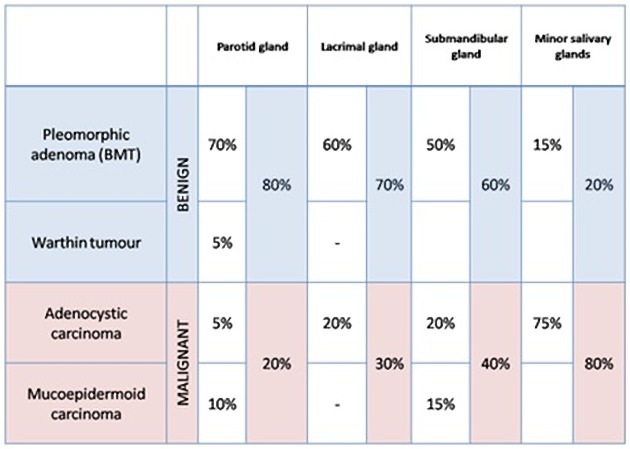
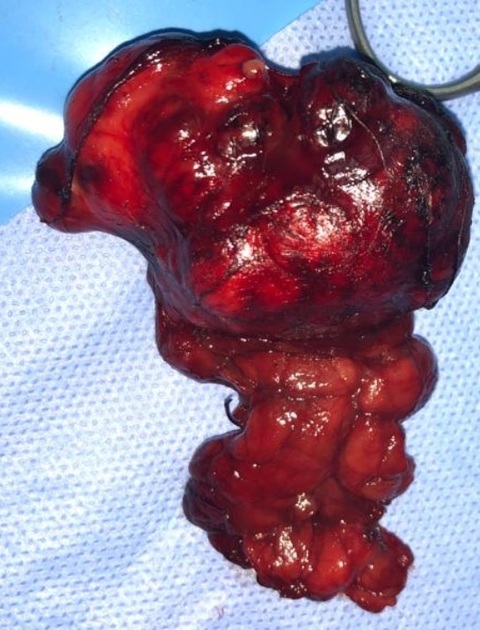
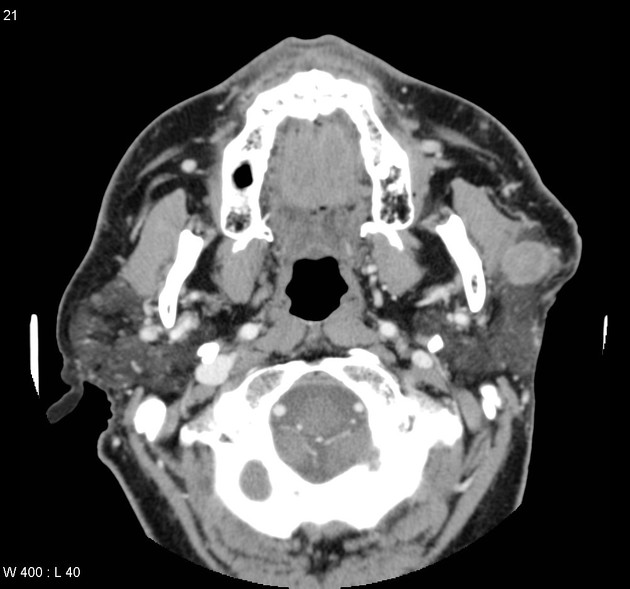
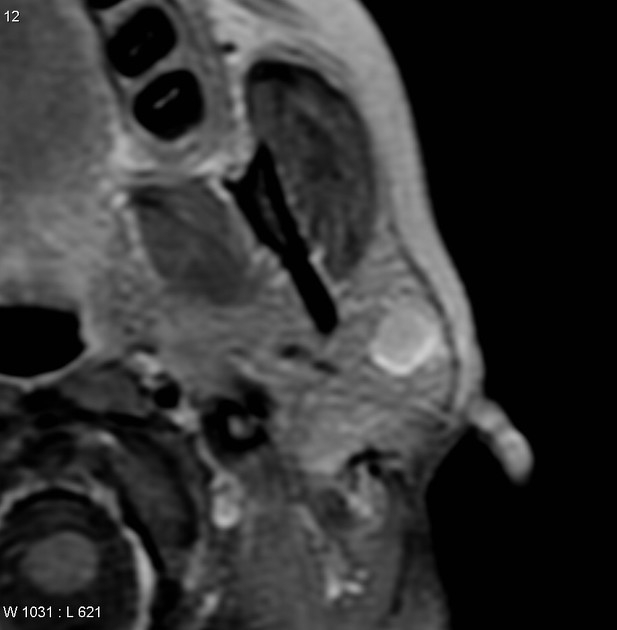

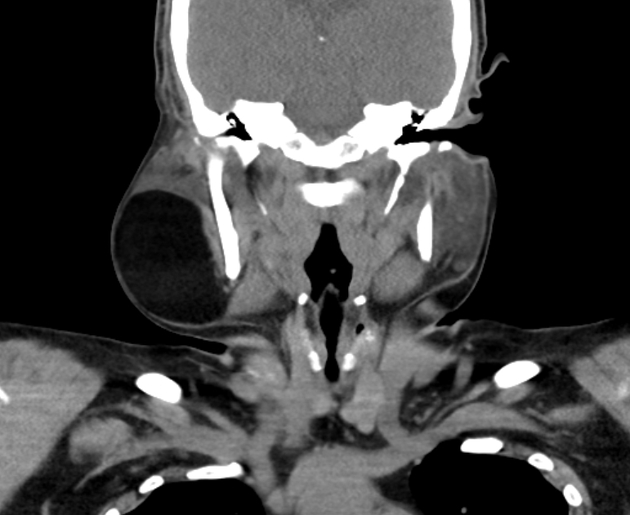
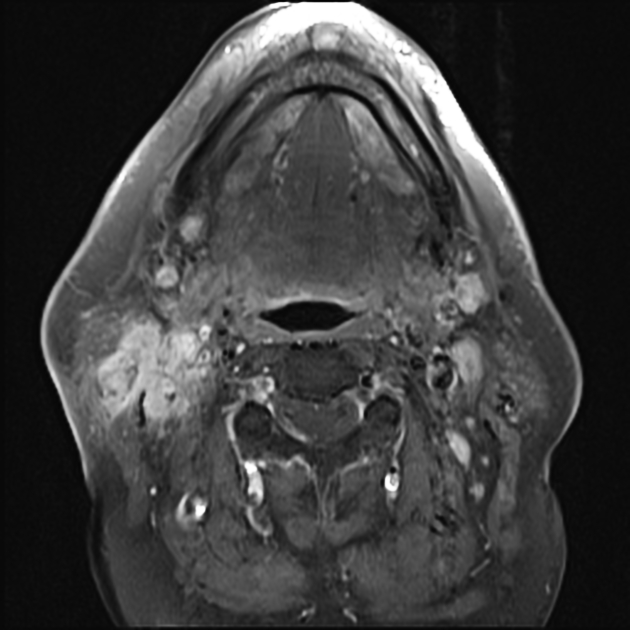
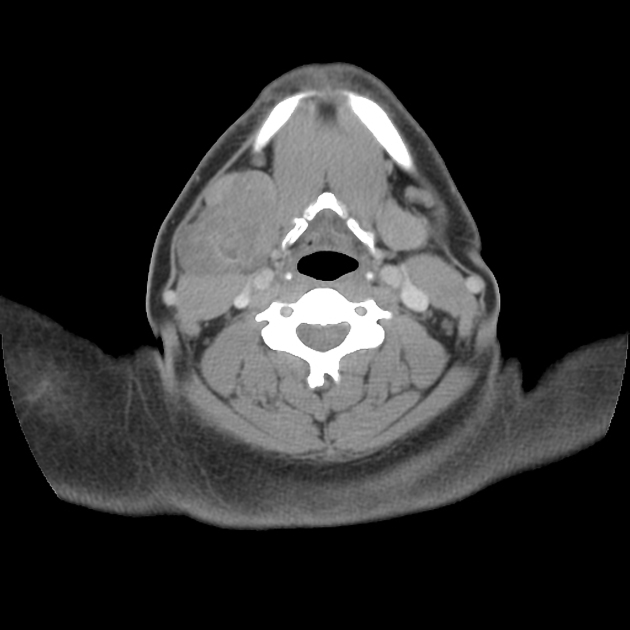
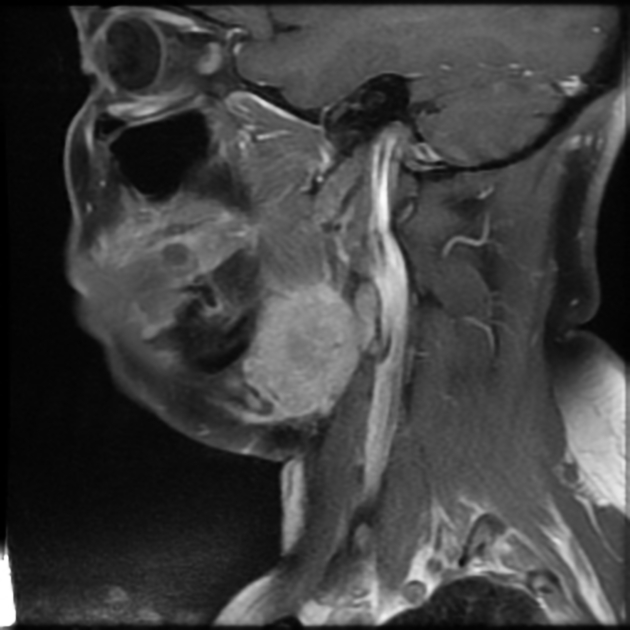
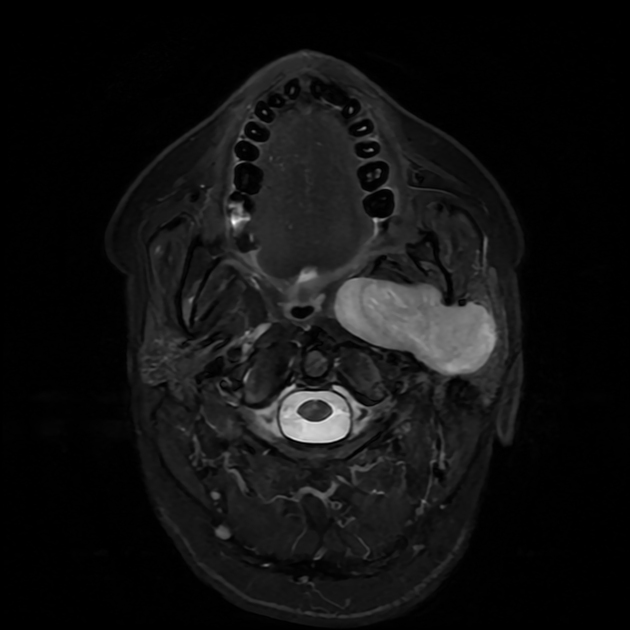


 Unable to process the form. Check for errors and try again.
Unable to process the form. Check for errors and try again.